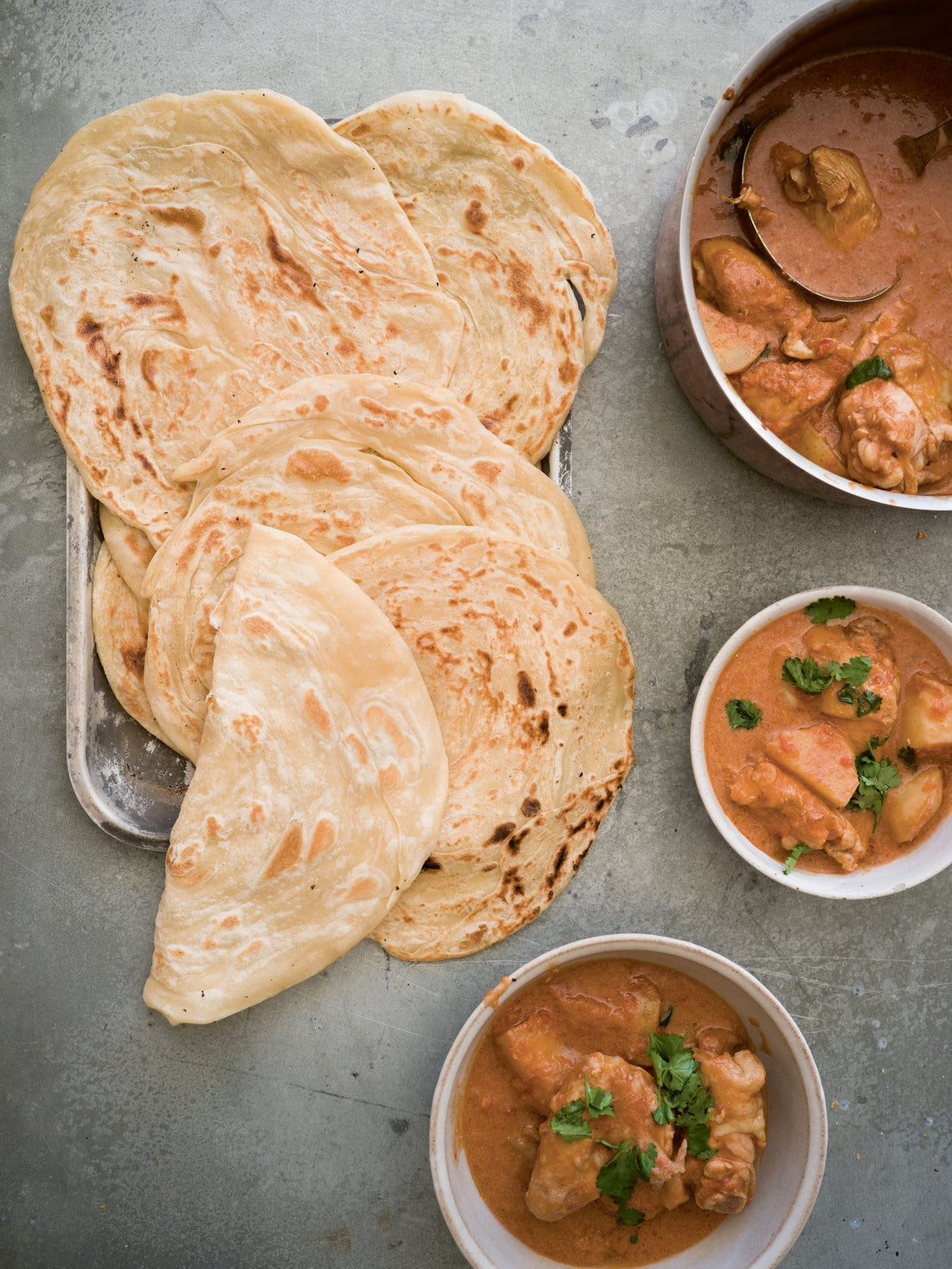Roti Canai Recipe by James Morton

Today we are sharing two recipes from James Morton, to celebrate the launch of his new cookbook “The Big Book of Bread” - Recipes and stories from around the globe.

His book explores bread in its myriad forms and offers delicious recipes for recreating loaves from across the globe. James guides you through classic, key bakes, many offered and selected by bakers from their countries of origin. Covering savoury favourites including Soda Bread, Sourdough and Shokupan, as well as sweet breads such as Babka, Buns and Brioche, this book showcases a world of delicious loaves.
Extract from "The Big Book of Bread":
"These are a staple in our house – a shout-out to Julie, who runs our local Michelin recommended Malaysian eatery, not for giving me this recipe (it’s apparently traditional never to give out your recipe for roti canai, I found to my displeasure) but I have Julie to thank for getting me hooked. First it was one, then two, then three we’d have to order during our COVID Lockdown takeaways, giving some semblance of joy during an otherwise unpleasant time for all.
Soon, the focus turned onto making them myself. These are a kind of riff on the Indian paratha – unleavened, laminated dough that benefits from a heavy hand with the oil, or ghee if you want to go Indian style, where some versions even use yeast. Instead I’ve used milk, to give some sweetness to this unleavened dough, and if you object to the use of animal stuff then you can replace the milk and egg with 200g coconut water."
Makes 8 roti
600g plain (all-purpose) flour
1 ½ tsp table salt
150g water
150g milk
1 egg
200–300g vegetable oil for shaping and soaking
1. Start by weighing your flour into a large bowl, then add your salt and stir it to combine. Add the water, milk and egg, and stir this into a stiff dough.
2. Knead it for 10 minutes or so until it’s smooth and stretchy. This one, I use an electric mixer for every time, but you could use the English stretch and roll knead.
3. Turn your dough out onto a work surface – you won’t need any flour and this dough is easily and pleasurably handled using a dough scraper, but if you’re struggling you can use some oil to stop it from sticking. Cut it into eight roughly equal lumps.
4. Shape it into rough balls – if you didn’t use any oil, the roll shaping method works quite well, and they don’t need to be perfect. Now, generously oil an oven dish or large Tupperware, and pour a drizzle of oil onto each lump of dough. As you pick them up, using oiled hands, make sure they’re completely coated, and space them out in your dish. Add a drizzle more oil on top so they’re sitting in a puddle of oil, and cover the dish with clingfilm (plastic wrap).
5. Leave the dough for at least a couple of hours, and preferably all day, at room temperature. If going longer than a day or overnight, stick the tray in the fridge, just remember to take it out again about 30 minutes before shaping, as cold dough is a nightmare to stretch.
6. Oil your work surface (a large area, at least 60cm/24in square) and place a lump of dough on top. Using oiled hands, gradually stretch your very stretchy dough out into a very large square, at least 50cm (20in), so you can see through it. Try to work on any thick areas as these can end up doughy. Don’t worry about any small tears.

7. Then you need to fold the dough. There are loads of methods, but my preferred fold is a bit like the lamination method. Fold the left side of the dough into the middle, then the right, to create a central seam. Repeat this again at the left and right sides, and then do the same top and bottom, with just one fold. You should have a small rectangle, which you can twirl into a little spiral of a lump. Set aside, re-oil the worktop, and repeat with the rest.

8. Preheat a heavy-based pan over a medium–high heat. Use the heel of your hand to press down your roti canai and stretch it out until it’s about 20cm (8in) in diameter (you can use a rolling pin if it’s getting tough). Cook for 2–3 minutes on each side until a mixture of mottled golden brown and the shiny white of cooked dough. Stack and serve within 10 minutes.


The Big Book of Bread by James Morton (Quadrille, £30), Photography by Andy Sewell.



